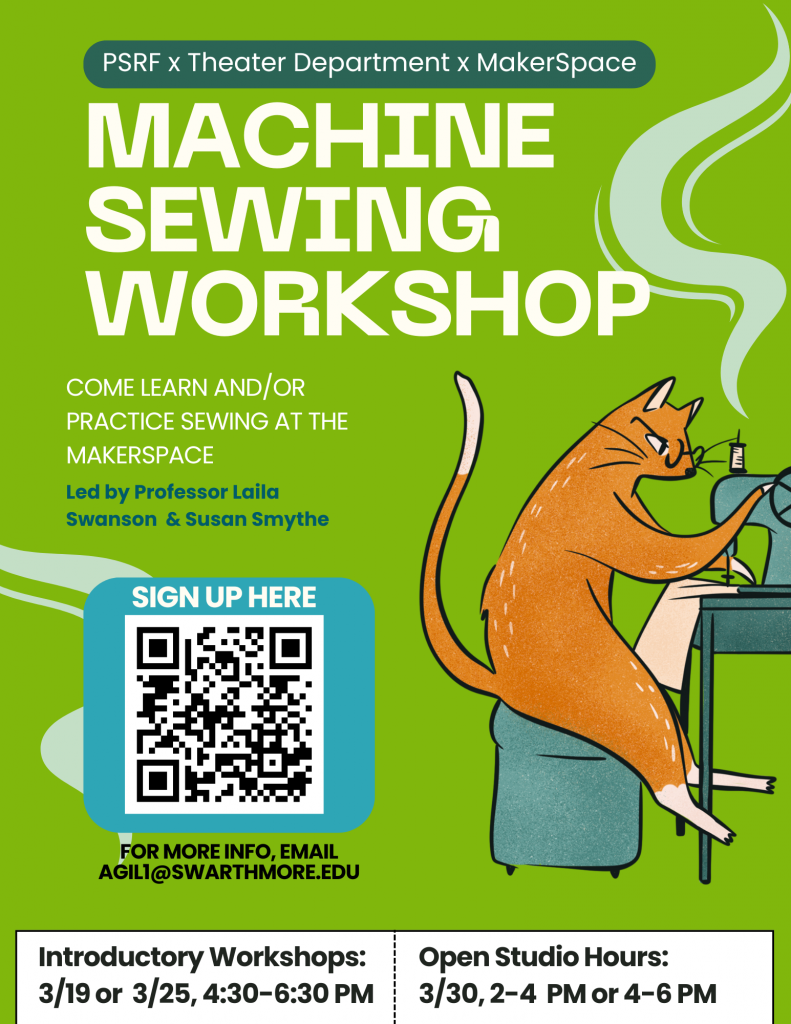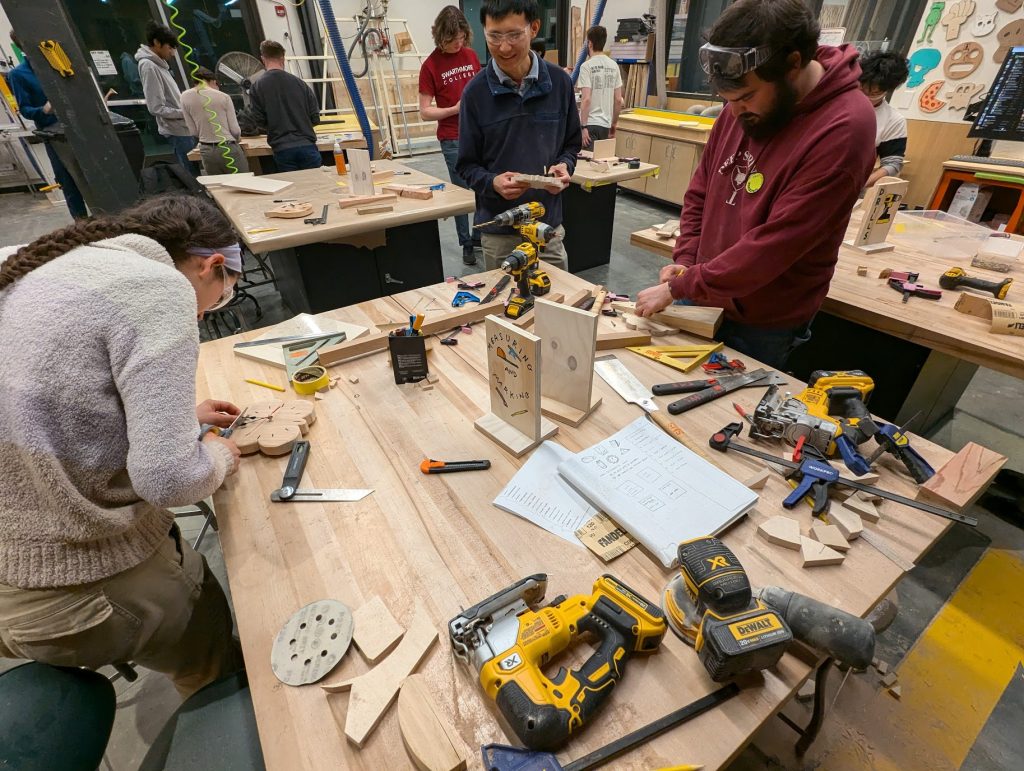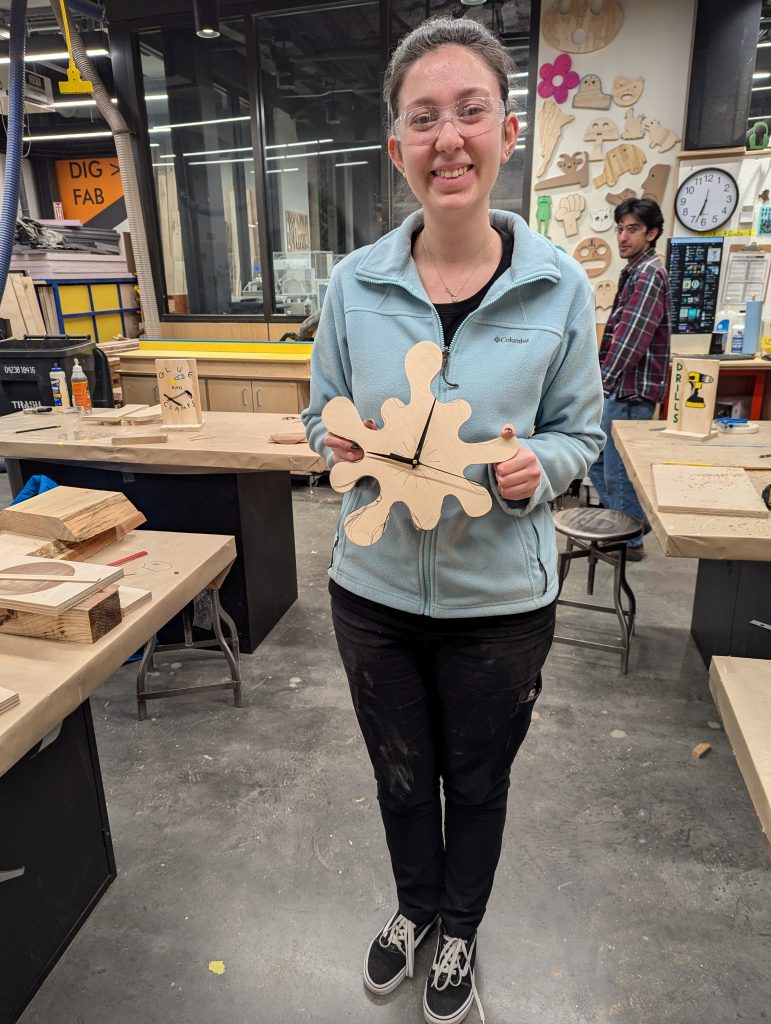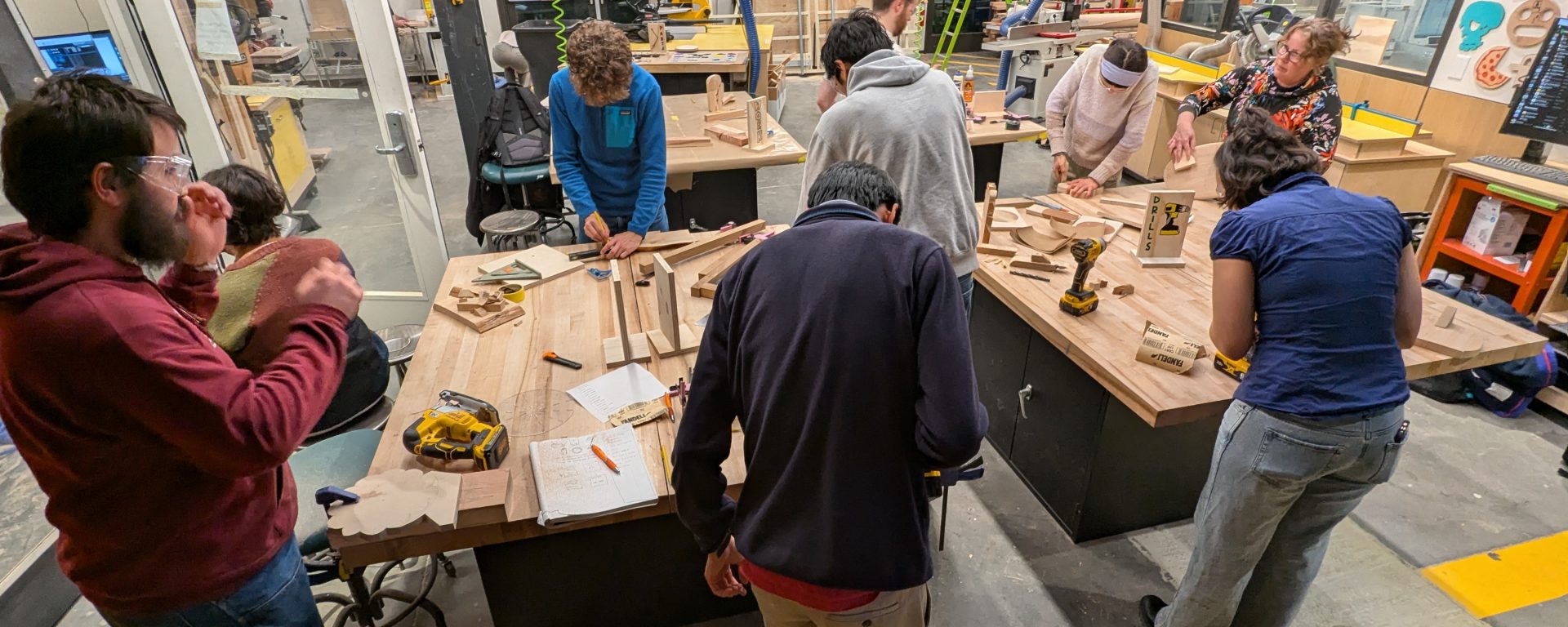This past academic year, the makerspace had the privilege and pleasure of helping support the President’s Sustainability Research Fellow Angela Gil and her excellent and impressive program of events and workshops throughout the Spring semester. The fuller picture is that Angela’s work over the year comprised more than just these workshops, but her physical/skill sustainability workshops were the center of action for us in the Makerspace.

With Angela’s guidance and expertise/facilitation from Theatre professor Laila Swanson, we helped host a pair of workshop trios in fabrication and sewing, focusing on basic woodworking, machine sewing, and hand sewing/mending. Each workshop guided about 8-12 Swat friends (students, faculty, and staff) through 2-ish hour skill-based workshops that culminated in a mini project. The brief summary is that they were a huge success; and I have a couple more thoughts:
1. There is a BIG demand for project-based workshops in practical skills that have a hand-made and creative component. Each respective series (sewing/wood) had almost 100 signups (!) that prompted an expansion of our dates and offerings.

2. The best projects in the Makerspace are not the ones that produce the most refined constructions, but the ones that open the door to the next idea or curiosity that comes up for someone in the space. These workshops didn’t only teach the better part of 100 people important sustainable skills, they drew in a new cast of folks who now may (and are encouraged to!) become familiar faces in the workshop.

3. The Makerspace, and making writ large, can be arguably unsustainable or clearly sustainable based on what we get up to, what we prioritize, and what we work together on. There is a baked-in cost in carbon to using power tools to manipulate material. There is a set of best practices in sourcing, providing, and recycling materials and supplies. But ultimately, there needs to be a culture of stewardship grown around the thoughtful use of a resource-intensive space like this. We need to continue to fill the space with people and programs that ask questions about how to bring sustainable practices into our school resources, personal lives, and communities. So… stay tuned for more!

